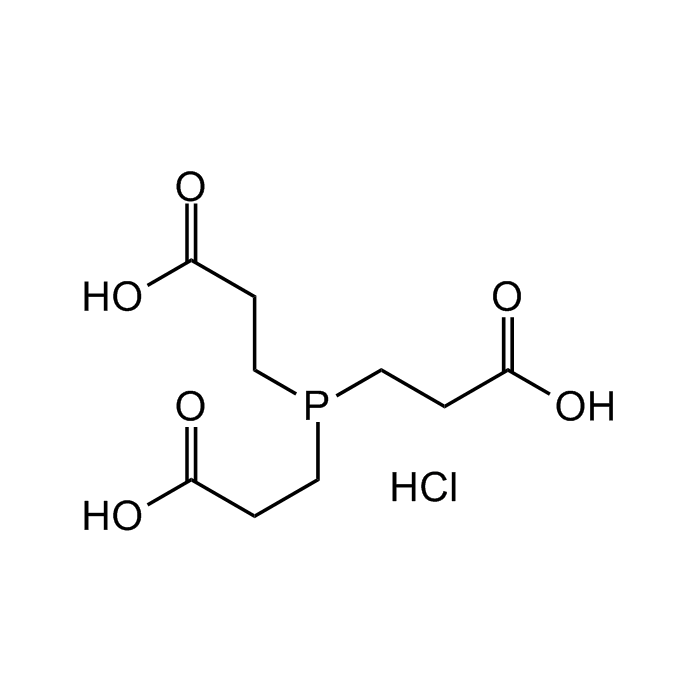Cookie Policy: This site uses cookies to improve your experience. You can find out more about our use of cookies in our Privacy Policy. By continuing to browse this site you agree to our use of cookies.
Chemodex
TCEP

| Product Details | |
|---|---|
| Synonyms | Tris(2-carboxyethyl)phosphine hydrochloride |
| Product Type | Chemical |
| Properties | |
| Formula |
C9H15O6P . HCl |
| MW | 286.6 |
| CAS | 51805-45-9 |
| Purity Chemicals | ≥98% (NMR) |
| Appearance | White to off-white powder. |
| Solubility | Soluble in water (50mg/ml) or DMSO (3mg/ml). |
| Identity | Determined by 1H-NMR. |
| Declaration | Manufactured by Chemodex. |
| Other Product Data |
Click here for Original Manufacturer Product Datasheet |
| InChi Key | PBVAJRFEEOIAGW-UHFFFAOYSA-N |
| Smiles | OC(CCP(CCC(O)=O)CCC(O)=O)=O.Cl |
| Shipping and Handling | |
| Shipping | AMBIENT |
| Short Term Storage | +4°C |
| Long Term Storage | +4°C |
| Handling Advice | Protect from light and moisture. |
| Use/Stability | Stable for at least 2 years after receipt when stored at +4°C. |
| Documents | |
| Product Specification Sheet | |
| Datasheet |
 Download PDF Download PDF |
TCEP is an odorless, selective, and water-soluble strong reducing agent that is commonly used in biochemistry and molecular biology applications. It is commonly used to rapidly reduce protein and peptide disulfide bonds a preparatory step for gel electrophoresis. TCEP can be combined with proteases to simultaneously reduce and digest proteins prior to mass spectrometry in order to dramatically increase sequence coverage. More stable than DTT and useful in mass spectrometry applications. It has also been used to measure ascorbic acid and dehydroascorbic acid in biological samples. TCEP is a useful chelating agent for various heavy metal ions as Zn(II), Cd(II), Pb(II), and Ni(II).
(1) J. Lykkesfeldt; Anal. Biochem. 282, 89 (2000) | (2) C.C. Visser, et al.; J. Drug Target 12, 569 (2004) | (3) C. David, et al.; Phys. Chem. Chem. Phys. 11, 2532 (2009) | (4) P. Liu, et al.; J. Am. Soc. Mass Spectrom. 21, 837 (2010) | (5) H.M. Zhang, et al.; Anal. Chem. 82, 1450 (2010)





